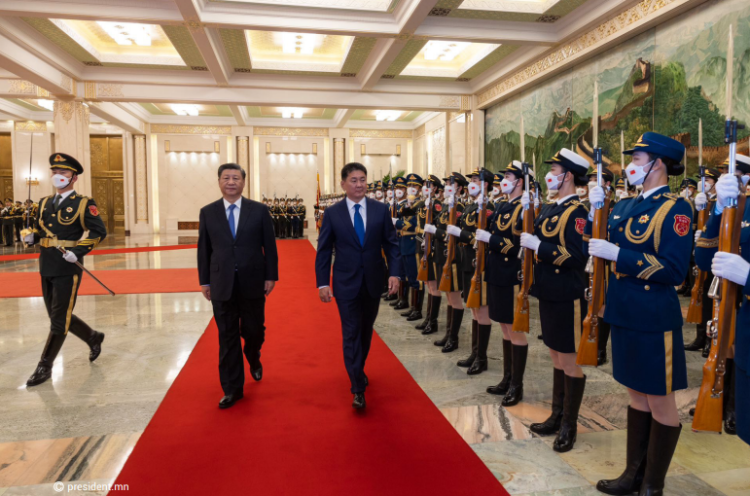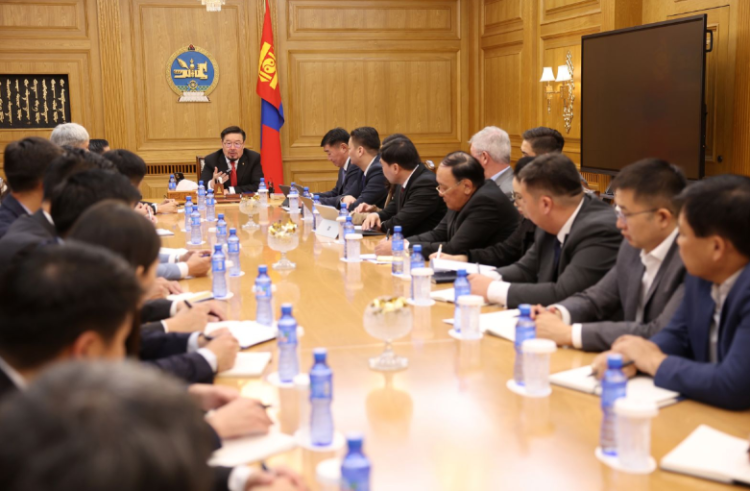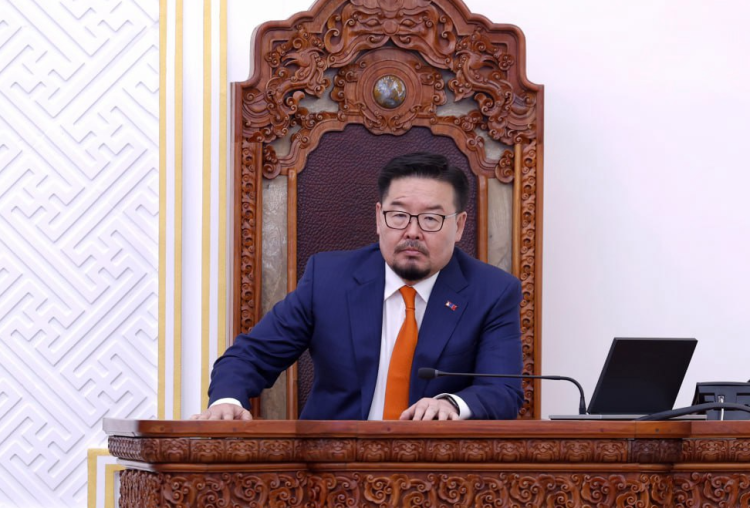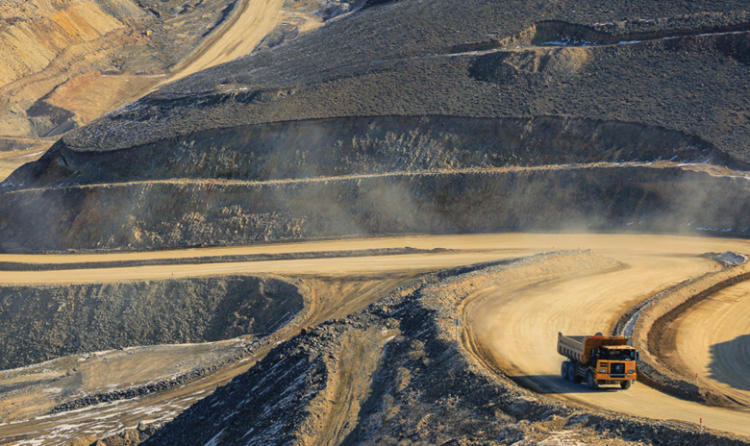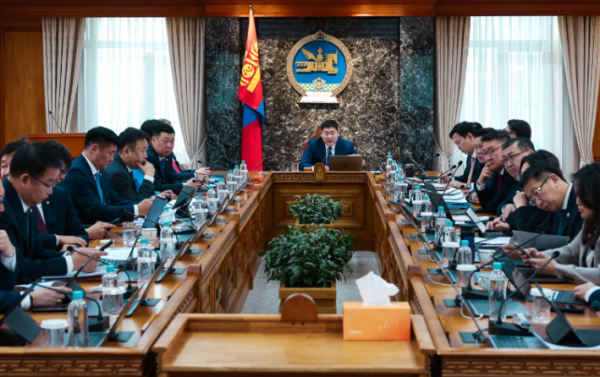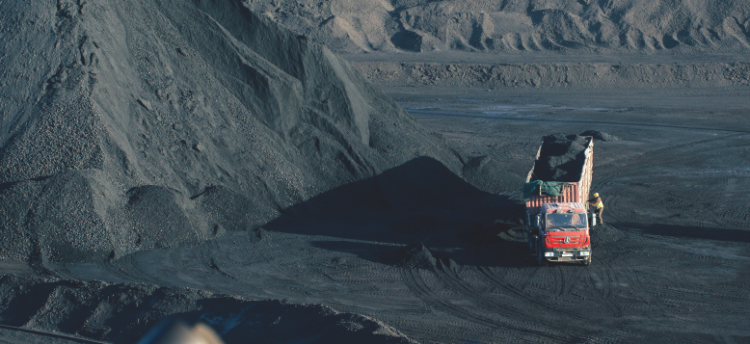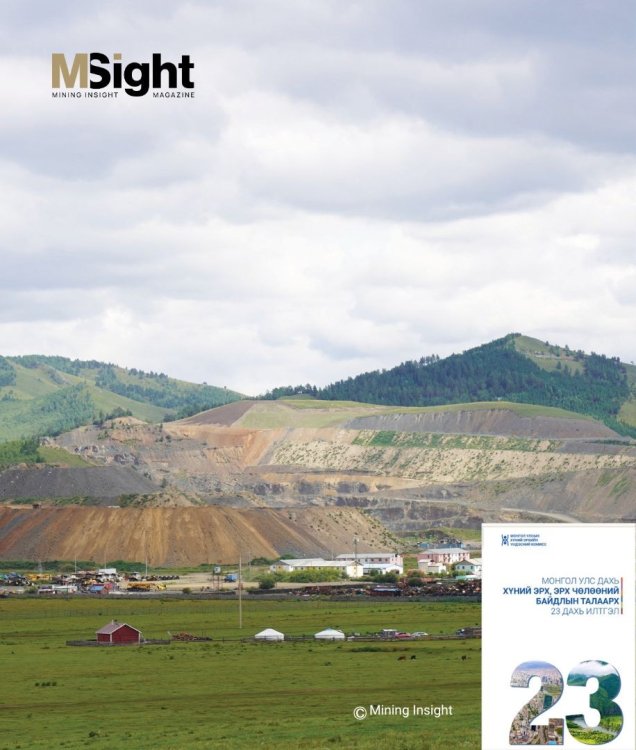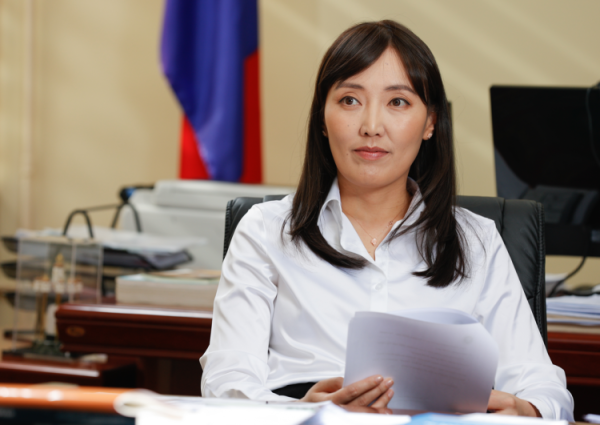ARIUNTUYA.N
ariun@mininginsight.mnThe President of Mongolia Khurelsukh Ukhnaa paid an official visit to China on November 27- 28 and Japan on November 29-December 2, 2022. During the visit to China, the sides strengthened their comprehensive strategic partnership, signed 16 documents, and issued a joint statement with 19 provisions. The President of Mongolia paid a state visit to Japan after 12 years and renewed diplomatic relations, marking the 50th anniversary and defining the development prospects between the two countries for the next 50 years. A Joint Statement was signed to develop the next 10-year Action Program, announcing a "Special Strategic Partnership", which was previously a “strategic partnership”, for peace and prosperity.
CHINA: RAILWAY CONNECTION BETWEEN KHANGI AND MANDAL BORTS TO BE COMPLETED IN MARCH
The timing of the visit was significant. Two years after the pandemic, when the 20th National Congress of the Communist Party of China (CPC) ended and the Standing Committee of the Politburo and the Central Committee of the Party renewed, they met with a new group that will have a great impact on China’s development in the next five years and beyond. This is the time when Xi Jinping was elected as the General Secretary of the 20th National Congress and started his third term as the leader of the CPC with strengthened authority. The heads of the two countries are meeting for the second time in the last two and a half months. Before that, they had an official meeting during the XXII session of the SCO Council of Heads of State in Samarkand, Uzbekistan. Mongolia’s key foreign trade partner is China. During the visit, the full partnership document for the MidTerm Economic and Foreign Trade Strategy, which is planned for eight years, was updated. When Xi Jinping visited Mongolia in 2014, he approved the program and agreed to increase bilateral trade to USD 10 billion. As a result in 2021, the trade turnover reached USD 10.1 billion. During the recent visit, the sides set a goal to boost trade to USD 20 billion in the coming years. Mining products make up the largest volume of bilateral trade between the two countries.
The joint statement issued as a result of the visit stated that the Chinese side supported Mongolia's proposal to increase coal exports to 40-70 million tonnes per year, especially for coal. Every time the heads of state and government of our country visit the southern neighbor, they request to increase the export of coal, and certain quantities have been discussed each time, but it has rarely been implemented. This time, how will our proposal to increase the supply of coal to 40-70 million tonnes be different from the previous one? Also, behind the idea of "support", the Chinese side proposed to purchase as much as Mongolia can produce. However, it seems China sees a rather muted capacity of coal supply from Mongolia. In addition to mining, it was apparent that there is a concern on the buyer side over the export capacity concerning transportation, logistics, and port access. Therefore, if Mongolia finds a solution to domestic factors limiting coal production, the buyer has promised to buy at a much higher volume. In a way, the situation depends on whether Mongolia can increase its export capacity. However, it is still early to judge whether the talks between the leaders of the two countries were effective. The results of the meeting will be more apparent in 2023. On the other hand, China's economic growth, production, and demand for our coal, which is highly dependent on export capacity, have also increased over climate change efforts. One of the major decisions of the 20th National Congress of the People's Republic of China was the announcement of a step-by-step phase-out of coal-fired power generation between 2035 and 2050. This limits the window of opportunity for Mongolia to supply coal, which is estimated at just over ten years.
Another important result expected from the state visit of President Khurelsukh Ukhnaa to the southern neighbor is the agreement on accelerating the connection of the export railways, which has been completed from the Mongolian side. Confirming this in a joint statement, it was announced that "the parties will actively advance the construction of the railway crossing the borderline of the mutually agreed countries and open a new railway crossing point connecting Mongolia and China soon." The key focus of the visit seemed to be about advancing the rail connection of the Khangi-Mandal port and agreeing on details within the framework of the railway agreement between the two countries. It is anticipated that the sides will finalize the railway connection at the border in March 2023. Since the middle of December, involved authorities of the two countries have been actively in touch over railway connection. The administration of Baotou and Khukhhot, under the guidance of the central government, is having regular online meetings with Mongolian counterparts and has received all the necessary information for connecting the railway across the border, such as the coordinates, elevation, and map of the border road of the Khangi-Zuynbayan route. Railway blueprints are currently under development. The Chinese side informed the 9.5-km long railway connection with a capacity of transporting 20 million tonnes of freight from the Mandal part can be built within a month and will soon commence construction. On the Mongolian side, railway concessionaires are preparing to start the construction of the terminal from narrow gauge to broad gauge when the weather warms up in spring. Track gauge conversion from broad to narrow is already done. If all goes according to plan, the border railway will be operational by the middle of 2023, and freight transport through the Khangi route can begin. On a side note, the trial transportation of the Zuunbayan-Khangi railway will begin in mid-January. Ukhaakhudag coal will be loaded trucks from containers at Khangi station and cross the border by a short-haul. The Khangi-Mandal checkpoint is an international port. During Khurelsukh Ukhnaa’s visit, Chinese President Xi Jinping assigned the task of studying and deciding on the proposal to turn the port into an international road and railway port, and the Chinese Foreign Minister Wang Yi gave directions to the chairman of the Development and Reform Committee, who were present at the meeting between the heads of state of the two countries. In other words, the status of the export port is already under discussion at the Foreign Minister level of the two countries. However, it will take some time to connect the Tavantolgoi-Gashuunsuhait railway across the border due to several problems. It is a positive step regardless for both sides to have a common agreement even if the connection assembly fails.
The 20 km-long railway design was prepared by China Design Bureau No. 3. According to the blueprint, the Mongolian side will cover the cost of constructing the connection bridge. Coal logistics, which are of great importance to Mongolia's foreign trade and export, are being resolved by rail. It was based on the agreements on long-term coal supply and export facilitation signed by both sides.
JAPAN: PRESIDENT-SUPPORTED HYDROGEN PLANT
Within the framework of the visit, President Khurelsukh Ukhnaa took part in the 10th MongolianJapanese public and private consultation meeting held in Tokyo, in which he remarked, "The Mongolian side will fully support the private sector organizations of both countries working to jointly implement the projects on hydrogen plant and by-product processing plant, combining our country's rich mineral resources with Japan's advanced technology.” "I am confident that with the implementation of this project, the cooperation between the two countries in the field of green energy and chemical industry will enter a new stage and expand further," he said in the protocol of the visit. During the 10th consultation meeting, Mongolian businesses signed six major contracts with Japanese companies, one of which is the hydrogen plant project. Within the framework of the project, the parties have agreed to start a large-scale study and development of a feasibility study for the development of a coalchemical industry in Mongolia.
At the business meeting, Kh.Bazarkhan, a member of the Mongolian Gold LLC project team, presented the "Hydrogen production and by-product processing plant project". Private sector organizations of the two countries will conduct joint research on extracting hydrogen and other by-products from coal, which are already in the pre-feasibility study stage. This is not the first time that Mongolia and Japan have decided to research gasifying coal for a coal chemical plant. In 2016, the governments of the two countries signed a Memorandum of Understanding to conduct joint research on coal technology and establish a research center in Mongolia. Under the memorandum, a working group was established at the Ministry of Mining and Heavy Industry to conduct a joint research team. Unfortunately, before the Japanese experts arrived in Mongolia, the government went through another shuffle, thus, no one was in charge of the working group, nor knew about the project. This came as a surprise for the Japanese counterpart. As such, the efforts failed to move on to the research phase. This time, the President has taken the initiative of coal gasification and coal chemical industry development projects. Before the state visit to Japan, the Office of the President established a working group to implement a project on constructing a hydrogen plant based on coal gasification, adding onto the abandoned goals with new conditions and context.
The working group is headed by B.Nyamtaishir, head of the Policy Council of the MAK. He has been given the special rights of an ambassador in the project. The working group includes representatives from the Ministry of Foreign Affairs, the Ministry of Mining and Heavy Industry, and the Ministry of Economy and Development, as well as the former ambassadors to Japan D.Batjargal and S.Khurelbaatar as advisors. The failed example of the previous task force is mentioned here to remind us not to repeat such history. In any case, this is the project that the President is most interested in.
The fact that the working group is coordinated by the Office of the President, and that the project has been entrusted to B.Nyamtaishir of MAK Group, who has been conducting research for a decade on coal gasification and liquefaction, gives great hope.
A key takeaway is that the private sector will be able to handle everything if it is not politicized. This idea was first reflected in the 2018 Parliament Resolution "On Some Measures to be Taken to Intensify the Activities of the Tavantolgoi Coal Deposit" and to implement "Necessary measures to be taken to build a power plant and a coal chemical plant based on the Tavantolgoi deposit to meet the energy needs of mining projects in the southern region." The development of this concept will help establish a coal chemical pilot plant under "Erdenes Tavantolgoi" JSC’s medium-term business plan A6/20 for 2021- 2025. More specifically, the target of "establishing a demonstration plant (demo plant) and a research and development center for coal gasification, model products, providing preparation for future projects, and training personnel" is expected to be realized in the next three years.
The project for the pilot plant was first presented at the "Mining Week" event held in September. The coal chemical pilot plant will produce polypropylene plastic and a small amount of gasoline. The research team presented the possibility of cleaning gasified coal during the production process and extracting a small amount of hydrogen for research purposes. We mentioned this to show an option of drawing Tavantolgoi deposit for the "Hydrogen production and by-products for processing plant project". In recent years, Japan has been leading in the research and production of hydrogen, which is considered the fuel of the future. In particular, the country's Kawasaki Heavy Industries company implemented a pilot project to extract hydrogen from brown coal, and in 2018, the company tested a smallscale power plant powered by 100% hydrogen for the first time in the world. Last year, Prime Minister L.Oyun-Erdene got acquainted with the company's pilot project and a small-scale hydrogen power plant. Prior to that, he discussed the development of the MongolianJapanese public-private partnership in adopting hydrogen extraction technology from lignite, the attraction of Japanese investment, and the development of coal deposits during his visit to Japan. He proposed technical and economic cooperation in developing a hydrogen power plant within these areas. The President's visit laid the foundations for private sector cooperation in the coal-chemical industry, lignite-extracted hydrogen, and coal-based final products, which signifies the scope of the project.
Mining Insight Magazine №12 (013), December 2022



